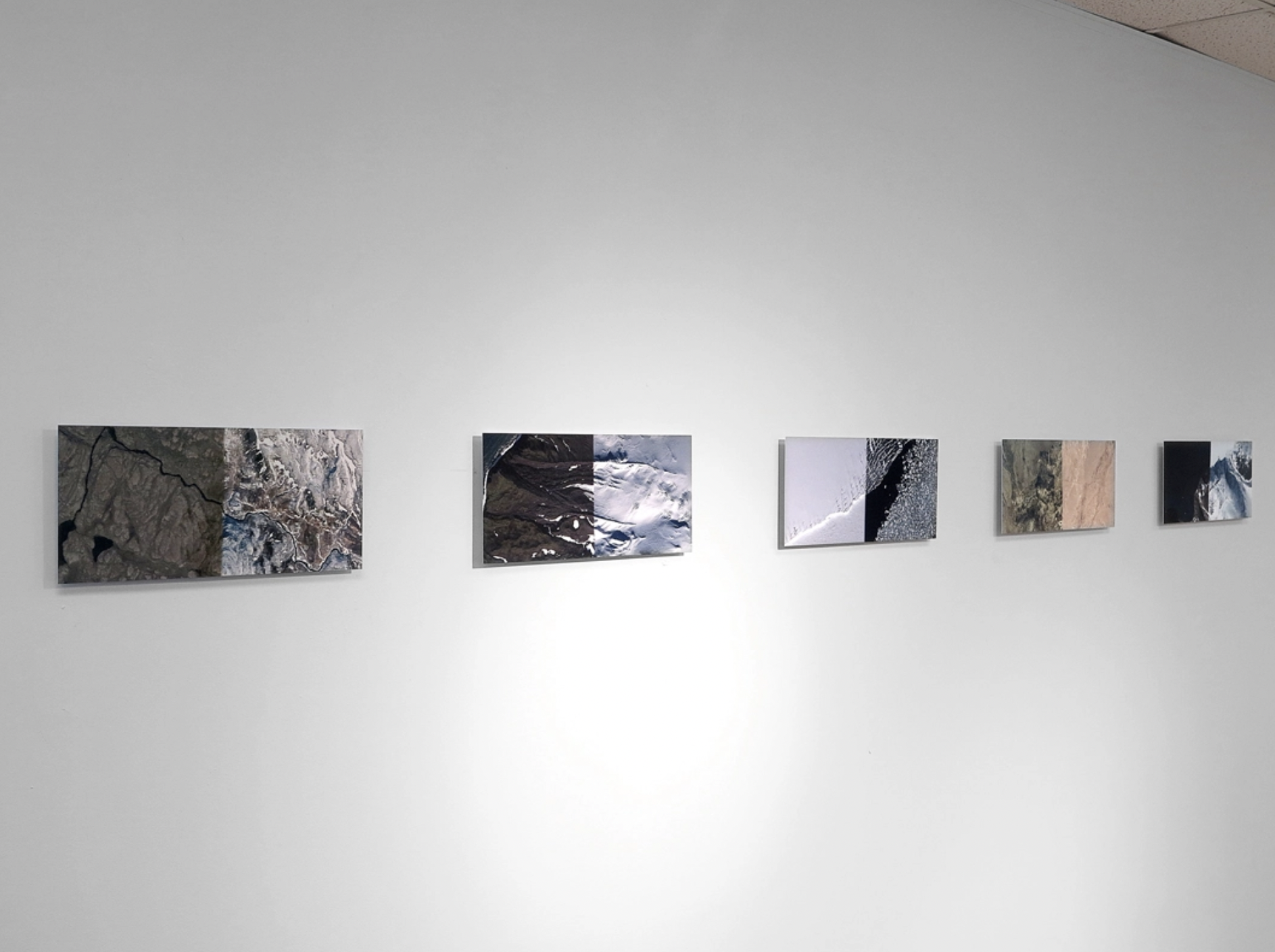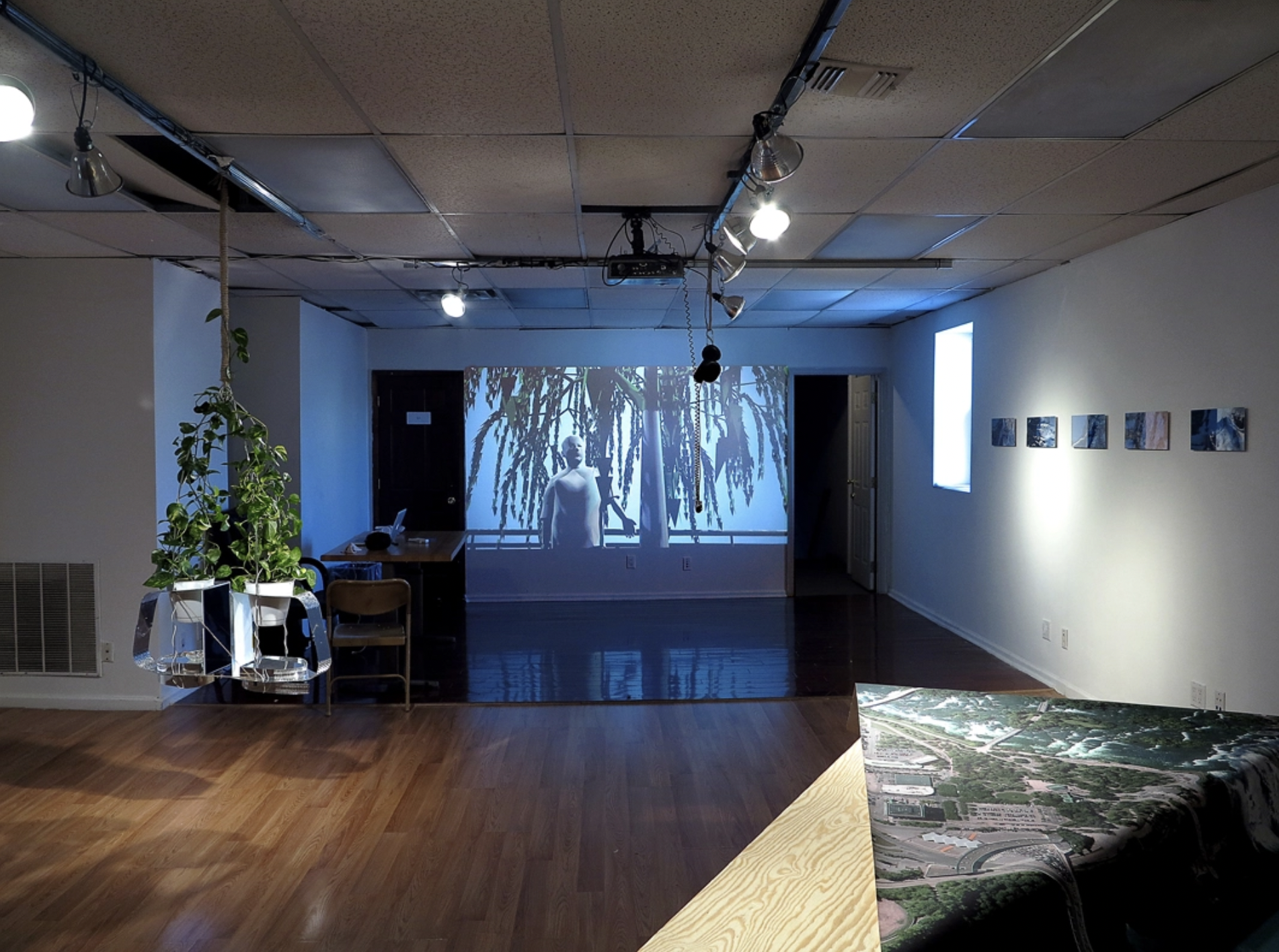YOU! WHAT PLANET IS THIS?
Mattia Casalegno, Alex Krauss, Eva Papamargariti, Mitch Patrick, Daniel Schwarz, Clement Valla
October 9 – November 4, 2015
ROOMSERVICE Gallery
The hyper-cultural tourist is a non-thinking, restless being. Without moving physically, he is already on the road to elsewhere. However, what is important is not the journey (like in a pilgrimage) but the event as an arrival point.
In November 1994, Microsoft launched its commercial series Where do you want to go?, in which the personal computer is described as “an open opportunity for everybody… [that facilitates] the flow of information so that good ideas—wherever they come from—can be shared.”[1] The commercial shows how the user can now enter distant worlds through the device; can find, store, and share infinite amounts of information; can use the computer as his personal coach, personal trainer, personal educator, and ultimately as his personal transport system. Images from daily life now dominate, and most parts of the world are accessible through media: the user becomes a hyper(-cultural) tourist.
The trend towards digitalization reproduces the world as code. There is nothing left that could permanently escape from this “surgery”—no secrets that could not be made available through this functionalization and operationalization. Marc Augé, in his book Non-Places: Introduction to Anthropology of Supermodernity, explains how the advent of telematics and digital technologies have dramatically changed the way we move around and relate to physical spaces. Heidegger already stated in Being and Time (1927) that media images would lead to a world empty of meaning, that “the result of media images would be the disappearance of reality.”[2] But what does that mean today?
Microsoft’s commercial series exemplifies precisely how the real essence of the world eludes the user, or hyper-cultural tourist. The World Wide Web has doubled our world but replaced its depth with a screen that the user navigates like a flat maritime landscape: the hyper-cultural tourist surfs in the waters of images and information and travels the hyperspace of events, where he carries not the attitude of an adventurous sailor, but rather that of a navigating consumer. This hyperspace, lacking in Logos, is characterized by the log-in or the logo. The experience of our surroundings is now determined by windowing.[3]
We scout our next wine tasting itinerary from a Starbucks coffee table, peek at the Himalayan sunset from our iPhone, share our latest recipe with a best friend on the other side of the globe, surveil the downtown rally from our living room, rove across the Afghan mountains from an office in Arizona, join in some events of the everyday but surrender our evenings to facing our phones and laptops. We hop from window to window, through other windows, while staying physically in the same place.
Virtual photography, Google Earth snapshots, fictional yet domestic environments, dystopic remote video chatting, sound installations, and other media in this exhibition will shed light on these aspects of hyper-tourism and offer an unexpected view of our planet and the world we live in. The exhibition will not only showcase different forms of hyper-travelling, but also critically question our own existence and the influence of technology on our life today. By investigating the shifting boundaries between, and our movements through, virtual and real life, we acknowledge their fading distinctions.
__________
[1] Wieden & Kennedy, New York, November1994
[2] Martin Heidegger, Sein & Zeit, Max Niemeyer Verlag ,Tubingen, 2006, pp.26 f.
[3] Byung Chul Han, Hyperkulturalitaet. Kultur und Globalisierung, Berlin 2005, p. 17









